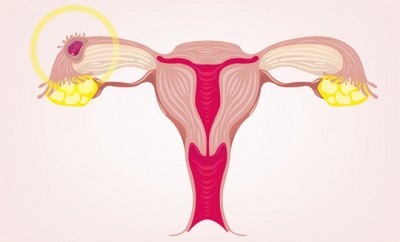What Is Implantation Bleeding and When Does Implantation Bleeding Occur?
Implantation spotting or bleeding can be an early sign of pregnancy in some women, but what is implantation bleeding and when does it usually occur? First, to understand this early symptom of pregnancy, you need to know what happens during implantation.
Implantation occurs after fertilization and is the attachment of a fertilized egg to the lining of the uterus. This occurs shortly after the fertilized egg travels through the fallopian tube and enters the uterus. Implantation happens about 6-12 days after ovulation and fertilization.
Signs of implantation may include:
1.Temperature fluctuations about 7-10 days after ovulation.
2. Mild cramping of the uterus.
3. Slight spotting or bleeding, called implantation bleeding.
What is Implantation Bleeding?
Implantation bleeding may occur after a fertilized egg, now called a blastocyte, has attached itself to the lining of the uterus. This process of attachment can cause irritation and movement to the lining, which may cause some bleeding from the uterus lining. This is a fairly common symptom of pregnancy, and approximately 25 to 35 percent of women will have implantation bleeding during the very early stages of pregnancy.
Many women mistake implantation bleeding for the start of their normal menstrual period. However, implantation bleeding does not look like regular menstrual bleeding. It is usually dark pink to dark brown in color and the amount of bleeding is very light, lasting only about 2 days.. For some women, it resembles a very light period and may last longer than a couple of days, which is why confusion between implantation bleeding and a menstrual period occasionally occurs. The majority of women find that menstrual blood is a brighter red in color and will become much heavier within a day or two.
When Does Implantation Bleeding Occur?
Another reason for some confusion between implantation bleeding and the beginning of a woman’s menstrual period is the time in a woman’s cycle when implantation bleeding occurs. Implantation bleeding usually happens about 10-14 days after ovulation and fertilization of an egg. Unfortunately, this can be the same time that a woman expects her period to begin. It can be even more confusing because you may experience symptoms similar to the ones that you get before and during your period: bloating, cramping, headaches, fatigues, and mood swings. Why does this happen? Hormone level changes in the first few weeks of pregnancy are very similar to the hormonal changes during your menstrual cycle. If you have been trying to get pregnant, it will be important to pay very close attention to changes in your body which are uncharacteristic of your normal menstrual period symptoms.
Whether you are trying to have a baby or not, any unusual bleeding from the uterus can be a cause for concern. Distinguishing between implantation bleeding and early miscarriage bleeding can be somewhat confusing as well. In general, bleeding from a miscarriage may begin as light spotting but will become heavier with small to large clots and a dark red color, very similar to menstrual bleeding, but can also be very painful. In contrast, implantation bleeding will be much lighter in flow and color without clots lasts only a few days.
Yet, to be absolutely certain as to the cause of any abnormal uterine bleeding, you should visit your gynecologist for a hCG (pregnancy) blood test or an early pregnancy ultrasound. A pregnancy blood test usually will detect a pregnancy within 3-4 days after implantation, and a pregnancy urine test can detect a pregnancy within 4-5 days after implantation.













